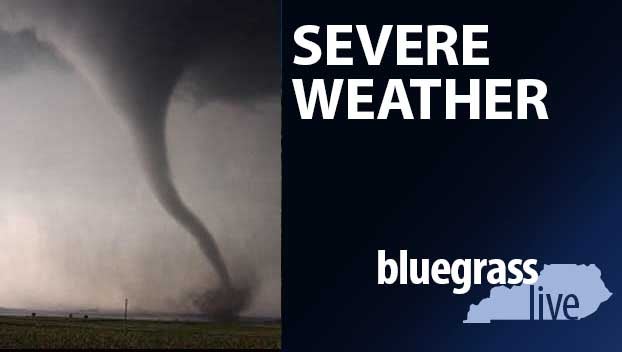Winter tornadoes may be more powerful as globe warms, study shows
Published 6:01 pm Monday, December 13, 2021
Nasty winter tornadoes — like the deadly ones last week that hit five states — are likely to be stronger and stay on the ground longer with a wider swath of destruction in a warming world, a new study shows.
The combination of a longer and wider track with slightly stronger winds means some rare winter tornadoes that are killers now will have nine times more the power by the end of the century if carbon dioxide levels continued to rise, according to a study presented at the American Geophysical Union conference Monday.
The study, which pre-dates the devastating Mayfield, Kentucky, tornado outbreak, looks at strength and not frequency of big tornadoes as climate change progresses. Not peer reviewed yet, it was presented in poster form as a peak at new research to be published later.
“There is a potential for events in the future that are more intense that would not have been as intense in the current climate,” said study author Jeff Trapp, head of atmospheric sciences at the University of Illinois, Urbana-Champaign. “Bearing in mind that these high end events are still going to be rare.”
Trapp took the conditions during two large tornado strikes in 2013 — the Hattiesburg, Mississippi, tornado that in February of that year injured 82 people with winds of 170 mph and the Moore, Oklahoma, tornado that killed 24 people with winds up to 210 mph (340 kph) in May— and put them into dozens of computer simulations of worst-case climate change scenario by 2100, which other scientists say is increasingly unlikely.
The worst-case scenario, which the world used to be on track for, would have another 6 degrees (3.3 degrees Celsius) or so of warming between now and the end of the century. Trapp said he will soon run simulations based on a scenario closer to the current trajectory for carbon dioxide emissions of about 3.2 degrees (1.8 degrees Celsius) warming above current levels.
Trapp found a big change on the winter storm, significantly longer and wider tracks and windspeed increases around 14% that added up to the nine-fold increase in power when using a formula that takes wind speed, rotation and size of path into account. Power increased 1.5 times for the spring storm, he said.
Trapp said that’s because there are two key ingredients needed for tornadoes: unstable stormy weather and wind shear. Wind shear, the difference between winds up high and near the ground, is usually stronger in the winter, but there’s not as much stormy weather because it requires warm humid conditions near the ground. But as the world warms there will be more opportunity for instability in the winter, he said.
Three outside scientists said there may be something to the research, but they aren’t yet completely convinced.
“I’m not 100% sold on the technique, but it’s a very interesting approach,” said Harold Brooks, a scientist at the National Severe Storms Laboratory in Norman, Oklahoma. “To me the really interesting result seems to be the longer-tracks for the cool season.”
A single study always raises uncertainty issues, but the results make sense, said Northern Illinois University meteorology professor Victor Gensini: “One of the major components to Friday’s outbreak was the broad and anomalous warm (swath of temperatures) which permitted the storm to last for what will likely be a record-breaking path length.”






